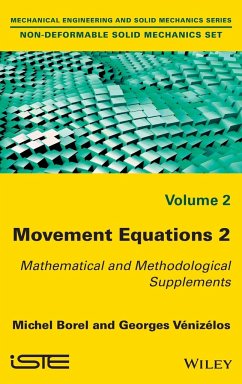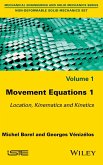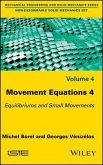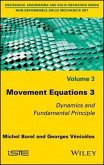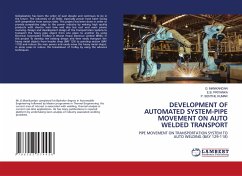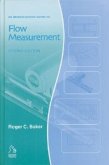- Gebundenes Buch
- Merkliste
- Auf die Merkliste
- Bewerten Bewerten
- Teilen
- Produkt teilen
- Produkterinnerung
- Produkterinnerung
The formalism processing of unbuckled solids mechanics involves several mathematical tools which are to be mastered at the same time. This volume collects the main points which take place in the course of the formalism, so that the user immediately finds what he needs without looking for it. Furthermore, the book contains a methodological formulary to guide the user in his approach.
Andere Kunden interessierten sich auch für
![Movement Equations 1 Movement Equations 1]() Michel BorelMovement Equations 1187,99 €
Michel BorelMovement Equations 1187,99 €![Movement Equations 4 Movement Equations 4]() Michel BorelMovement Equations 4187,99 €
Michel BorelMovement Equations 4187,99 €![Movement Equations 3 Movement Equations 3]() Michel BorelMovement Equations 3187,99 €
Michel BorelMovement Equations 3187,99 €![DEVELOPMENT OF AUTOMATED SYSTEM-PIPE MOVEMENT ON AUTO WELDED TRANSPORT DEVELOPMENT OF AUTOMATED SYSTEM-PIPE MOVEMENT ON AUTO WELDED TRANSPORT]() G. MANIKANDANDEVELOPMENT OF AUTOMATED SYSTEM-PIPE MOVEMENT ON AUTO WELDED TRANSPORT37,99 €
G. MANIKANDANDEVELOPMENT OF AUTOMATED SYSTEM-PIPE MOVEMENT ON AUTO WELDED TRANSPORT37,99 €![An Introductory Guide to Flow Measurement An Introductory Guide to Flow Measurement]() Roger C BakerAn Introductory Guide to Flow Measurement116,99 €
Roger C BakerAn Introductory Guide to Flow Measurement116,99 €![Advanced Materials for Fluid Machinery Advanced Materials for Fluid Machinery]() Imeche (Institution of Mechanical Engineers)Advanced Materials for Fluid Machinery298,99 €
Imeche (Institution of Mechanical Engineers)Advanced Materials for Fluid Machinery298,99 €![Mechanics of Aeronautical Composite Materials Mechanics of Aeronautical Composite Materials]() Christophe BouvetMechanics of Aeronautical Composite Materials187,99 €
Christophe BouvetMechanics of Aeronautical Composite Materials187,99 €-
-
-
The formalism processing of unbuckled solids mechanics involves several mathematical tools which are to be mastered at the same time. This volume collects the main points which take place in the course of the formalism, so that the user immediately finds what he needs without looking for it. Furthermore, the book contains a methodological formulary to guide the user in his approach.
Hinweis: Dieser Artikel kann nur an eine deutsche Lieferadresse ausgeliefert werden.
Hinweis: Dieser Artikel kann nur an eine deutsche Lieferadresse ausgeliefert werden.
Produktdetails
- Produktdetails
- Verlag: Wiley
- Seitenzahl: 200
- Erscheinungstermin: 3. Februar 2017
- Englisch
- Abmessung: 240mm x 161mm x 15mm
- Gewicht: 472g
- ISBN-13: 9781786300331
- ISBN-10: 1786300338
- Artikelnr.: 45719953
- Herstellerkennzeichnung
- Libri GmbH
- Europaallee 1
- 36244 Bad Hersfeld
- gpsr@libri.de
- Verlag: Wiley
- Seitenzahl: 200
- Erscheinungstermin: 3. Februar 2017
- Englisch
- Abmessung: 240mm x 161mm x 15mm
- Gewicht: 472g
- ISBN-13: 9781786300331
- ISBN-10: 1786300338
- Artikelnr.: 45719953
- Herstellerkennzeichnung
- Libri GmbH
- Europaallee 1
- 36244 Bad Hersfeld
- gpsr@libri.de
Michel BOREL, Retired since 2010, mechanics lecturer at CNAM Center in Versailles (1971-1999); associated professor at Petroleum and Motors National high School - ENSPM (1978-2008); engineer at Bertin Society (1970-1980); engineer at General Armement Direction - DGA (1980-2009). Georges VÉNIZÉLOS, Professor, Chair of Mechanical Systems Designing, Conservatoire National des Arts et Métiers (CNAM).
Introduction xi Table of Notations xiii Chapter 1. Vector Calculus 1 1.1. Vector space 1 1.1.1. Definition 1 1.1.2. Vector space - dimension - basis 2 1.1.3. Affine space 3 1.2. Affine space of dimension 3 - free vector 4 1.3. Scalar product äb 5 1.3.1. Properties of the scalar product 6 1.3.2. Scalar square - unit vector 6 1.3.3. Geometric interpretation of the scalar product 7 1.3.4. Solving the equation ä
x
= 0 9 1.4. Vector product a
b 9 1.4.1. Definition 9 1.4.2. Geometric interpretation of the vector product 10 1.4.3. Properties of vector product 11 1.4.4. Solving the equation a
x = b 11 1.5. Mixed product (a ,b, c ) 12 1.5.1. Definition 12 1.5.2. Geometric interpretation of the mixed product 12 1.5.3. Properties of the mixed product 13 1.6. Vector calculus in the affine space of dimension 3 15 1.6.1. Orthonormal basis 15 1.6.2. Analytical expression of the scalar product 16 1.6.3. Analytical expression of the vector product 16 1.6.4. Analytical expression of the mixed product 17 1.7. Applications of vector calculus 18 1.7.1. Double vector product 18 1.7.2. Resolving the equation ä
x
= b 22 1.7.3. Resolving the equation a
x = b 23 1.7.4. Equality of Lagrange 25 1.7.5. Equations of planes 25 1.7.6. Relations within the triangle 27 1.8. Vectors and basis changes 28 1.8.1. Einstein's convention 28 1.8.2. Transition table from basis (e) to basis (E) 30 1.8.3. Characterization of the transition table 32 Chatper 2. Torsors and Torsor Calculus 35 2.1. Vector sets 35 2.1.1. Discrete set of vectors 35 2.1.2. Set of vectors defined on a continuum 36 2.2. Introduction to torsors 37 2.2.1. Definition 37 2.2.2. Equivalence of vector families 38 2.3. Algebra torsors 38 2.3.1. Equality of two torsors 38 2.3.2. Linear combination of torsors 39 2.3.3. Null torsors 39 2.3.4. Opposing torsor 40 2.3.5. Product of two torsors 40 2.3.6. Scalar moment of a torsor - equiprojectivity 41 2.3.7. Invariant scalar of a torsor 43 2.4. Characterization and classification of torsors 43 2.4.1. Torsors with a null resultant 43 2.4.2. Torsors with a no-null resultant 45 2.5. Derivation torsors 48 2.5.1. Torsor dependent on a single parameter q 49 2.5.2. Torsor dependent of n parameters qi functions of p 51 2.5.3. Explicitly dependent torsor of n + 1 parameters 52 Chapter 3. Derivation of Vector Functions 55 3.1. Derivative vector: definition and properties 55 3.2. Derivative of a function in a basis 56 3.3. Deriving a vector function of a variable 57 3.3.1. Relations between derivatives of a function in different bases 57 3.3.2. Differential form associated with two bases 63 3.4. Deriving a vector function of two variables 65 3.5. Deriving a vector function of n variables 68 3.6. Explicit intervention of the variable p 70 3.7. Relative rotation rate of a basis relative to another 71 Chapter 4. Vector Functions of One Variable Skew Curves 73 4.1. Vector function of one variable 73 4.2. Tangent at a point M 74 4.3. Unit tangent vector
( q) 76 4.4. Main normal vector ( ) q
77 4.5. Unit binormal vector ( ) q ß 79 4.6. Frenet's basis 80 4.7. Curvilinear abscissa 81 4.8. Curvature, curvature center and curvature radius 83 4.9. Torsion and torsion radius 84 4.10. Orientation in (
) of the Frenet basis 87 Chapter 5. Vector Functions of Two Variables Surfaces 91 5.1. Representation of a vector function of two variables 91 5.1.1. Coordinate curves 91 5.1.2. Regular or singular point - tangent plane - unit normal vector 93 5.1.3. Distinctive surfaces 95 5.1.4. Ruled surfaces 101 5.1.5. Area element 110 5.2. General properties of surfaces 111 5.2.1. First quadratic form 111 5.2.2. Darboux-Ribaucour's trihedral 114 5.2.3. Second quadratic form 119 5.2.4. Meusnier's theorems 121 5.2.5. Geodesic torsion 123 5.2.6. Prominent curves traced on a surface 125 5.2.7. Directions and principal curvatures of a surface 127 Chapter 6. Vector Function of Three Variables: Volumes 135 6.1. Vector functions of three variables 135 6.1.1. Coordinate surfaces 135 6.1.2. Coordinate curves 136 6.1.3. Orthogonal curvilinear coordinates 136 6.2. Volume element 137 6.2.1. Definition 137 6.2.2. Applications to traditional coordinate systems 138 6.3. Rotation rate of the local basis 139 6.3.1. Calculation of the partial rotation rate 1
(
,e) 140 6.3.2. Calculation of the rotation rate 143 Chapter 7. Linear Operators 145 7.1. Definition 145 7.2. Intrinsic properties 145 7.3. Algebra of linear operators 147 7.3.1. Unit operator 147 7.3.2. Equality of two linear operators 147 7.3.3. Product of a linear operator by a scalar 147 7.3.4. Sum of two linear operators 148 7.3.5. Multiplying two linear operators 148 7.4. Bilinear form 149 7.5. Quadratic form 150 7.6. Linear operator and basis change 150 7.7. Examples of linear operators 152 7.7.1. Operation f = a ^ F 152 7.7.2. Operation f = a ^ (a ^ F) 152 7.7.3. Operation f = a(b
F) 153 7.7.4. Operation f = a ^ (F ^ a) 155 7.8. Vector rotation Ru
,a 156 7.8.1. Expression of the vector rotation 156 7.8.2. Quaternion associated with the vector rotation Ru
,a 159 7.8.3. Matrix representation of the vector rotation 160 7.8.4. Basis change and rotation vector 162 Chapter 8. Homogeneity and Dimension 165 8.1. Notion of homogeneity 165 8.2. Dimension 165 8.3. Standard mechanical dimensions 166 8.4. Using dimensional equations 168 Bibliography 171 Index 173
x
= 0 9 1.4. Vector product a
b 9 1.4.1. Definition 9 1.4.2. Geometric interpretation of the vector product 10 1.4.3. Properties of vector product 11 1.4.4. Solving the equation a
x = b 11 1.5. Mixed product (a ,b, c ) 12 1.5.1. Definition 12 1.5.2. Geometric interpretation of the mixed product 12 1.5.3. Properties of the mixed product 13 1.6. Vector calculus in the affine space of dimension 3 15 1.6.1. Orthonormal basis 15 1.6.2. Analytical expression of the scalar product 16 1.6.3. Analytical expression of the vector product 16 1.6.4. Analytical expression of the mixed product 17 1.7. Applications of vector calculus 18 1.7.1. Double vector product 18 1.7.2. Resolving the equation ä
x
= b 22 1.7.3. Resolving the equation a
x = b 23 1.7.4. Equality of Lagrange 25 1.7.5. Equations of planes 25 1.7.6. Relations within the triangle 27 1.8. Vectors and basis changes 28 1.8.1. Einstein's convention 28 1.8.2. Transition table from basis (e) to basis (E) 30 1.8.3. Characterization of the transition table 32 Chatper 2. Torsors and Torsor Calculus 35 2.1. Vector sets 35 2.1.1. Discrete set of vectors 35 2.1.2. Set of vectors defined on a continuum 36 2.2. Introduction to torsors 37 2.2.1. Definition 37 2.2.2. Equivalence of vector families 38 2.3. Algebra torsors 38 2.3.1. Equality of two torsors 38 2.3.2. Linear combination of torsors 39 2.3.3. Null torsors 39 2.3.4. Opposing torsor 40 2.3.5. Product of two torsors 40 2.3.6. Scalar moment of a torsor - equiprojectivity 41 2.3.7. Invariant scalar of a torsor 43 2.4. Characterization and classification of torsors 43 2.4.1. Torsors with a null resultant 43 2.4.2. Torsors with a no-null resultant 45 2.5. Derivation torsors 48 2.5.1. Torsor dependent on a single parameter q 49 2.5.2. Torsor dependent of n parameters qi functions of p 51 2.5.3. Explicitly dependent torsor of n + 1 parameters 52 Chapter 3. Derivation of Vector Functions 55 3.1. Derivative vector: definition and properties 55 3.2. Derivative of a function in a basis 56 3.3. Deriving a vector function of a variable 57 3.3.1. Relations between derivatives of a function in different bases 57 3.3.2. Differential form associated with two bases 63 3.4. Deriving a vector function of two variables 65 3.5. Deriving a vector function of n variables 68 3.6. Explicit intervention of the variable p 70 3.7. Relative rotation rate of a basis relative to another 71 Chapter 4. Vector Functions of One Variable Skew Curves 73 4.1. Vector function of one variable 73 4.2. Tangent at a point M 74 4.3. Unit tangent vector
( q) 76 4.4. Main normal vector ( ) q
77 4.5. Unit binormal vector ( ) q ß 79 4.6. Frenet's basis 80 4.7. Curvilinear abscissa 81 4.8. Curvature, curvature center and curvature radius 83 4.9. Torsion and torsion radius 84 4.10. Orientation in (
) of the Frenet basis 87 Chapter 5. Vector Functions of Two Variables Surfaces 91 5.1. Representation of a vector function of two variables 91 5.1.1. Coordinate curves 91 5.1.2. Regular or singular point - tangent plane - unit normal vector 93 5.1.3. Distinctive surfaces 95 5.1.4. Ruled surfaces 101 5.1.5. Area element 110 5.2. General properties of surfaces 111 5.2.1. First quadratic form 111 5.2.2. Darboux-Ribaucour's trihedral 114 5.2.3. Second quadratic form 119 5.2.4. Meusnier's theorems 121 5.2.5. Geodesic torsion 123 5.2.6. Prominent curves traced on a surface 125 5.2.7. Directions and principal curvatures of a surface 127 Chapter 6. Vector Function of Three Variables: Volumes 135 6.1. Vector functions of three variables 135 6.1.1. Coordinate surfaces 135 6.1.2. Coordinate curves 136 6.1.3. Orthogonal curvilinear coordinates 136 6.2. Volume element 137 6.2.1. Definition 137 6.2.2. Applications to traditional coordinate systems 138 6.3. Rotation rate of the local basis 139 6.3.1. Calculation of the partial rotation rate 1
(
,e) 140 6.3.2. Calculation of the rotation rate 143 Chapter 7. Linear Operators 145 7.1. Definition 145 7.2. Intrinsic properties 145 7.3. Algebra of linear operators 147 7.3.1. Unit operator 147 7.3.2. Equality of two linear operators 147 7.3.3. Product of a linear operator by a scalar 147 7.3.4. Sum of two linear operators 148 7.3.5. Multiplying two linear operators 148 7.4. Bilinear form 149 7.5. Quadratic form 150 7.6. Linear operator and basis change 150 7.7. Examples of linear operators 152 7.7.1. Operation f = a ^ F 152 7.7.2. Operation f = a ^ (a ^ F) 152 7.7.3. Operation f = a(b
F) 153 7.7.4. Operation f = a ^ (F ^ a) 155 7.8. Vector rotation Ru
,a 156 7.8.1. Expression of the vector rotation 156 7.8.2. Quaternion associated with the vector rotation Ru
,a 159 7.8.3. Matrix representation of the vector rotation 160 7.8.4. Basis change and rotation vector 162 Chapter 8. Homogeneity and Dimension 165 8.1. Notion of homogeneity 165 8.2. Dimension 165 8.3. Standard mechanical dimensions 166 8.4. Using dimensional equations 168 Bibliography 171 Index 173
Introduction xi Table of Notations xiii Chapter 1. Vector Calculus 1 1.1. Vector space 1 1.1.1. Definition 1 1.1.2. Vector space - dimension - basis 2 1.1.3. Affine space 3 1.2. Affine space of dimension 3 - free vector 4 1.3. Scalar product äb 5 1.3.1. Properties of the scalar product 6 1.3.2. Scalar square - unit vector 6 1.3.3. Geometric interpretation of the scalar product 7 1.3.4. Solving the equation ä
x
= 0 9 1.4. Vector product a
b 9 1.4.1. Definition 9 1.4.2. Geometric interpretation of the vector product 10 1.4.3. Properties of vector product 11 1.4.4. Solving the equation a
x = b 11 1.5. Mixed product (a ,b, c ) 12 1.5.1. Definition 12 1.5.2. Geometric interpretation of the mixed product 12 1.5.3. Properties of the mixed product 13 1.6. Vector calculus in the affine space of dimension 3 15 1.6.1. Orthonormal basis 15 1.6.2. Analytical expression of the scalar product 16 1.6.3. Analytical expression of the vector product 16 1.6.4. Analytical expression of the mixed product 17 1.7. Applications of vector calculus 18 1.7.1. Double vector product 18 1.7.2. Resolving the equation ä
x
= b 22 1.7.3. Resolving the equation a
x = b 23 1.7.4. Equality of Lagrange 25 1.7.5. Equations of planes 25 1.7.6. Relations within the triangle 27 1.8. Vectors and basis changes 28 1.8.1. Einstein's convention 28 1.8.2. Transition table from basis (e) to basis (E) 30 1.8.3. Characterization of the transition table 32 Chatper 2. Torsors and Torsor Calculus 35 2.1. Vector sets 35 2.1.1. Discrete set of vectors 35 2.1.2. Set of vectors defined on a continuum 36 2.2. Introduction to torsors 37 2.2.1. Definition 37 2.2.2. Equivalence of vector families 38 2.3. Algebra torsors 38 2.3.1. Equality of two torsors 38 2.3.2. Linear combination of torsors 39 2.3.3. Null torsors 39 2.3.4. Opposing torsor 40 2.3.5. Product of two torsors 40 2.3.6. Scalar moment of a torsor - equiprojectivity 41 2.3.7. Invariant scalar of a torsor 43 2.4. Characterization and classification of torsors 43 2.4.1. Torsors with a null resultant 43 2.4.2. Torsors with a no-null resultant 45 2.5. Derivation torsors 48 2.5.1. Torsor dependent on a single parameter q 49 2.5.2. Torsor dependent of n parameters qi functions of p 51 2.5.3. Explicitly dependent torsor of n + 1 parameters 52 Chapter 3. Derivation of Vector Functions 55 3.1. Derivative vector: definition and properties 55 3.2. Derivative of a function in a basis 56 3.3. Deriving a vector function of a variable 57 3.3.1. Relations between derivatives of a function in different bases 57 3.3.2. Differential form associated with two bases 63 3.4. Deriving a vector function of two variables 65 3.5. Deriving a vector function of n variables 68 3.6. Explicit intervention of the variable p 70 3.7. Relative rotation rate of a basis relative to another 71 Chapter 4. Vector Functions of One Variable Skew Curves 73 4.1. Vector function of one variable 73 4.2. Tangent at a point M 74 4.3. Unit tangent vector
( q) 76 4.4. Main normal vector ( ) q
77 4.5. Unit binormal vector ( ) q ß 79 4.6. Frenet's basis 80 4.7. Curvilinear abscissa 81 4.8. Curvature, curvature center and curvature radius 83 4.9. Torsion and torsion radius 84 4.10. Orientation in (
) of the Frenet basis 87 Chapter 5. Vector Functions of Two Variables Surfaces 91 5.1. Representation of a vector function of two variables 91 5.1.1. Coordinate curves 91 5.1.2. Regular or singular point - tangent plane - unit normal vector 93 5.1.3. Distinctive surfaces 95 5.1.4. Ruled surfaces 101 5.1.5. Area element 110 5.2. General properties of surfaces 111 5.2.1. First quadratic form 111 5.2.2. Darboux-Ribaucour's trihedral 114 5.2.3. Second quadratic form 119 5.2.4. Meusnier's theorems 121 5.2.5. Geodesic torsion 123 5.2.6. Prominent curves traced on a surface 125 5.2.7. Directions and principal curvatures of a surface 127 Chapter 6. Vector Function of Three Variables: Volumes 135 6.1. Vector functions of three variables 135 6.1.1. Coordinate surfaces 135 6.1.2. Coordinate curves 136 6.1.3. Orthogonal curvilinear coordinates 136 6.2. Volume element 137 6.2.1. Definition 137 6.2.2. Applications to traditional coordinate systems 138 6.3. Rotation rate of the local basis 139 6.3.1. Calculation of the partial rotation rate 1
(
,e) 140 6.3.2. Calculation of the rotation rate 143 Chapter 7. Linear Operators 145 7.1. Definition 145 7.2. Intrinsic properties 145 7.3. Algebra of linear operators 147 7.3.1. Unit operator 147 7.3.2. Equality of two linear operators 147 7.3.3. Product of a linear operator by a scalar 147 7.3.4. Sum of two linear operators 148 7.3.5. Multiplying two linear operators 148 7.4. Bilinear form 149 7.5. Quadratic form 150 7.6. Linear operator and basis change 150 7.7. Examples of linear operators 152 7.7.1. Operation f = a ^ F 152 7.7.2. Operation f = a ^ (a ^ F) 152 7.7.3. Operation f = a(b
F) 153 7.7.4. Operation f = a ^ (F ^ a) 155 7.8. Vector rotation Ru
,a 156 7.8.1. Expression of the vector rotation 156 7.8.2. Quaternion associated with the vector rotation Ru
,a 159 7.8.3. Matrix representation of the vector rotation 160 7.8.4. Basis change and rotation vector 162 Chapter 8. Homogeneity and Dimension 165 8.1. Notion of homogeneity 165 8.2. Dimension 165 8.3. Standard mechanical dimensions 166 8.4. Using dimensional equations 168 Bibliography 171 Index 173
x
= 0 9 1.4. Vector product a
b 9 1.4.1. Definition 9 1.4.2. Geometric interpretation of the vector product 10 1.4.3. Properties of vector product 11 1.4.4. Solving the equation a
x = b 11 1.5. Mixed product (a ,b, c ) 12 1.5.1. Definition 12 1.5.2. Geometric interpretation of the mixed product 12 1.5.3. Properties of the mixed product 13 1.6. Vector calculus in the affine space of dimension 3 15 1.6.1. Orthonormal basis 15 1.6.2. Analytical expression of the scalar product 16 1.6.3. Analytical expression of the vector product 16 1.6.4. Analytical expression of the mixed product 17 1.7. Applications of vector calculus 18 1.7.1. Double vector product 18 1.7.2. Resolving the equation ä
x
= b 22 1.7.3. Resolving the equation a
x = b 23 1.7.4. Equality of Lagrange 25 1.7.5. Equations of planes 25 1.7.6. Relations within the triangle 27 1.8. Vectors and basis changes 28 1.8.1. Einstein's convention 28 1.8.2. Transition table from basis (e) to basis (E) 30 1.8.3. Characterization of the transition table 32 Chatper 2. Torsors and Torsor Calculus 35 2.1. Vector sets 35 2.1.1. Discrete set of vectors 35 2.1.2. Set of vectors defined on a continuum 36 2.2. Introduction to torsors 37 2.2.1. Definition 37 2.2.2. Equivalence of vector families 38 2.3. Algebra torsors 38 2.3.1. Equality of two torsors 38 2.3.2. Linear combination of torsors 39 2.3.3. Null torsors 39 2.3.4. Opposing torsor 40 2.3.5. Product of two torsors 40 2.3.6. Scalar moment of a torsor - equiprojectivity 41 2.3.7. Invariant scalar of a torsor 43 2.4. Characterization and classification of torsors 43 2.4.1. Torsors with a null resultant 43 2.4.2. Torsors with a no-null resultant 45 2.5. Derivation torsors 48 2.5.1. Torsor dependent on a single parameter q 49 2.5.2. Torsor dependent of n parameters qi functions of p 51 2.5.3. Explicitly dependent torsor of n + 1 parameters 52 Chapter 3. Derivation of Vector Functions 55 3.1. Derivative vector: definition and properties 55 3.2. Derivative of a function in a basis 56 3.3. Deriving a vector function of a variable 57 3.3.1. Relations between derivatives of a function in different bases 57 3.3.2. Differential form associated with two bases 63 3.4. Deriving a vector function of two variables 65 3.5. Deriving a vector function of n variables 68 3.6. Explicit intervention of the variable p 70 3.7. Relative rotation rate of a basis relative to another 71 Chapter 4. Vector Functions of One Variable Skew Curves 73 4.1. Vector function of one variable 73 4.2. Tangent at a point M 74 4.3. Unit tangent vector
( q) 76 4.4. Main normal vector ( ) q
77 4.5. Unit binormal vector ( ) q ß 79 4.6. Frenet's basis 80 4.7. Curvilinear abscissa 81 4.8. Curvature, curvature center and curvature radius 83 4.9. Torsion and torsion radius 84 4.10. Orientation in (
) of the Frenet basis 87 Chapter 5. Vector Functions of Two Variables Surfaces 91 5.1. Representation of a vector function of two variables 91 5.1.1. Coordinate curves 91 5.1.2. Regular or singular point - tangent plane - unit normal vector 93 5.1.3. Distinctive surfaces 95 5.1.4. Ruled surfaces 101 5.1.5. Area element 110 5.2. General properties of surfaces 111 5.2.1. First quadratic form 111 5.2.2. Darboux-Ribaucour's trihedral 114 5.2.3. Second quadratic form 119 5.2.4. Meusnier's theorems 121 5.2.5. Geodesic torsion 123 5.2.6. Prominent curves traced on a surface 125 5.2.7. Directions and principal curvatures of a surface 127 Chapter 6. Vector Function of Three Variables: Volumes 135 6.1. Vector functions of three variables 135 6.1.1. Coordinate surfaces 135 6.1.2. Coordinate curves 136 6.1.3. Orthogonal curvilinear coordinates 136 6.2. Volume element 137 6.2.1. Definition 137 6.2.2. Applications to traditional coordinate systems 138 6.3. Rotation rate of the local basis 139 6.3.1. Calculation of the partial rotation rate 1
(
,e) 140 6.3.2. Calculation of the rotation rate 143 Chapter 7. Linear Operators 145 7.1. Definition 145 7.2. Intrinsic properties 145 7.3. Algebra of linear operators 147 7.3.1. Unit operator 147 7.3.2. Equality of two linear operators 147 7.3.3. Product of a linear operator by a scalar 147 7.3.4. Sum of two linear operators 148 7.3.5. Multiplying two linear operators 148 7.4. Bilinear form 149 7.5. Quadratic form 150 7.6. Linear operator and basis change 150 7.7. Examples of linear operators 152 7.7.1. Operation f = a ^ F 152 7.7.2. Operation f = a ^ (a ^ F) 152 7.7.3. Operation f = a(b
F) 153 7.7.4. Operation f = a ^ (F ^ a) 155 7.8. Vector rotation Ru
,a 156 7.8.1. Expression of the vector rotation 156 7.8.2. Quaternion associated with the vector rotation Ru
,a 159 7.8.3. Matrix representation of the vector rotation 160 7.8.4. Basis change and rotation vector 162 Chapter 8. Homogeneity and Dimension 165 8.1. Notion of homogeneity 165 8.2. Dimension 165 8.3. Standard mechanical dimensions 166 8.4. Using dimensional equations 168 Bibliography 171 Index 173

